
Visiting Half Dome: What to Know Before You Go
Discover the awe-inspiring Half Dome in Yosemite National Park, a granite giant beckoning adventurers with its rich history, thrilling hikes, and breathtaking views. Whether you're hiking the cables or simply gazing up in wonder, Half Dome promises an unforgettable experience.
Publish Date: August 06, 2024
Revision Date: April 5, 2025
Yosemite National Park Visitor's Guide is a Trademark.
Copyright © 2024 by Internetpress®
What is Half Dome?
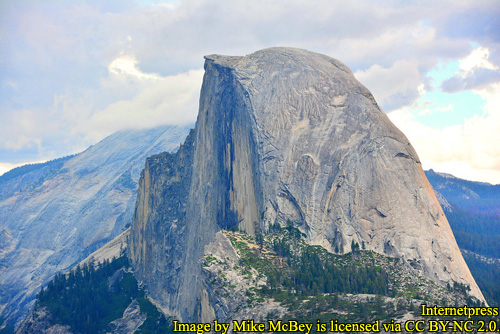
Half Dome is a massive granite formation in Yosemite National Park, known for its distinctive, smooth, and sheer face on one side and a rounded, dome-like back, giving it the appearance of a dome sliced in half—hence its name, first coined by geologist Josiah Whitney.
This iconic landmark, known to the native Ahwahneechee people as "Tis-sa-ack," rises approximately 4,800 feet (1,463 meters) from the valley floor and reaches a total height of 8,846 feet (2,696 meters) above sea level.
The granite which forms Half Dome had crystallized deep underground from molten rock around 93 million years ago. Over time, the overlying rock eroded away, exposing the granite to surface conditions. The process of exfoliation, where layers of rock peeled away due to pressure release, along with sculpting by glacial activity, gave Half Dome its unique shape. This striking formation stands as a testament to the powerful geological forces that shaped the Sierra Nevada.
Where is Half Dome Located?
Half Dome is located in the south central part of Yosemite National Park, and more specifically, it stands at the southeastern end of Yosemite Valley, towering over the Merced River and nearby features like Mirror Lake. Its location makes it a prominent landmark and a focal point for many park visitors. Therefore, it is easily visible from various points throughout the park, including Glacier Point, Tunnel View, and the Yosemite Valley floor.
Which Experiences does Half Dome Offer?
Other than its spectacular and memorable appearance, it offers a summit hike. Embarking on the journey to the summit of Half Dome is a test of endurance, strength, and determination.
The hike typically starts at one of two parking lots which are next to the Valley Loop Trail providing a short walk to the Mist trailhead at Happy Isles. Hikers then navigate the Mist Trail, climbing steep stone steps alongside the powerful cascades of Vernal and Nevada Falls.
The trail then levels out slightly as it joins the John Muir Trail, offering stunning views of the surrounding wilderness. As hikers ascend higher, the landscape shifts from lush forests to more rugged terrain, leading to the Sub Dome. Here, the trail becomes steeper and more exposed, culminating in the final challenge: the Half Dome cables.
This last section involves a heart-pounding climb up the granite face, aided by metal cables installed seasonally. The effort is rewarded at the summit, where panoramic views of Yosemite Valley and the High Sierra provide a breathtaking and unforgettable experience.
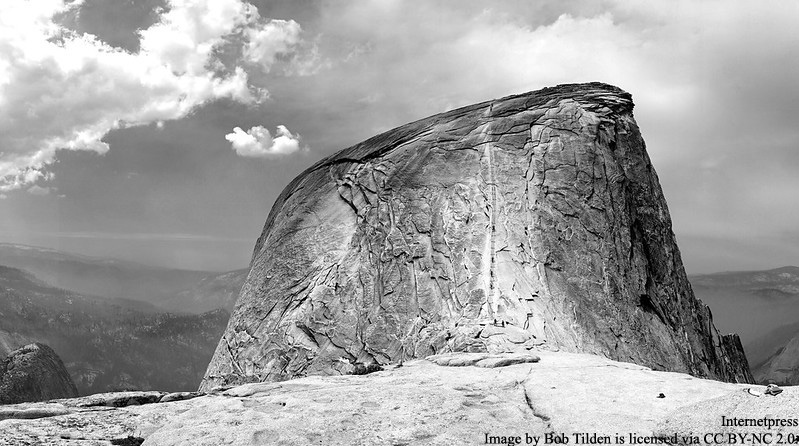
Most Popular and Easy to get to Locations for Viewing Half Dome
Half Dome is one of Yosemite’s most iconic landmarks, visible from countless vantage points both within Yosemite Valley and from high above its dramatic rim. But for those hoping to capture the perfect shot or simply marvel at its beauty, certain spots stand out as the best. In this section, we’ll guide you to the most popular and easily accessible locations where you can take unforgettable photos of this magnificent granite peak. Whether you’re a seasoned photographer or just snapping a few keepsake shots, these spots offer fantastic views that showcase Half Dome’s grandeur in all its glory.
Map of Most Popular Half Dome Viewing Locations
Discover the ultimate guide to viewing Half Dome with our detailed map, showcasing eleven of Yosemite National Park's most popular viewing locations. Each spot is marked with arrows pointing toward Half Dome, making it easy to visualize the direction of the iconic landmark from any viewpoint. This free, downloadable PDF map is compatible with most internet browsers, so you can explore it instantly. Following the map, you'll find detailed sections on each viewing location, including precise directions, the distance from Half Dome, and stunning photos capturing the breathtaking views.
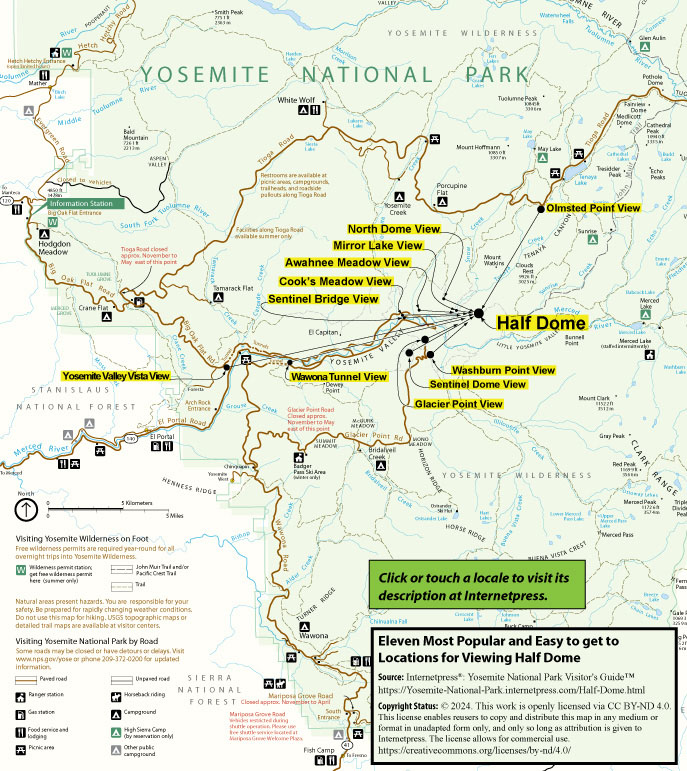
Yosemite Valley Vista Point View
Located on Big Oak Flat Road, Yosemite Valley Vista Point provides many new visitors with their first glimpse of Half Dome as they enter Yosemite Valley, making it an exciting introduction to the park. At about 10.82 miles (17.4 km) away, this is the farthest view of Half Dome and may seem less dramatic than closer vantage points, but its sweeping, elevated perspective captures Half Dome framed by forests and granite formations as you descend into the valley. A small parking area just off the paved road offers easy access for a quick stop to enjoy the scenery, and a powerful zoom lens is recommended to fully capture the distant details of Half Dome from this vantage point. Facing southeast, the vista attracts a moderate number of visitors, especially in spring, summer, and fall when conditions are ideal. Although there is no foot trail at this location, the nearby road and parking area make it accessible. The closest restrooms are at the Big Oak Flat Entrance Station, just a short drive up the road. Sunset is an exceptional time to visit, as the fading light casts a warm glow over the valley and enhances the distant view of Half Dome—making it a rewarding stop for photographers and sightseers alike.
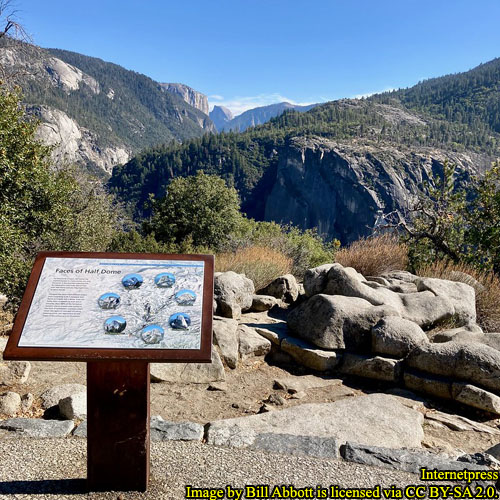
Wawona Tunnel View
Situated along Wawona Road near the western entrance to Yosemite Valley, Tunnel View is one of the most iconic and easily accessible spots for viewing and photographing Half Dome. Just steps from the paved parking lot, this overlook offers a dramatic, sweeping vista that captures Half Dome in the distance, framed by El Capitan on the left and Bridalveil Fall on the right. Known for its awe-inspiring composition, Tunnel View attracts many visitors throughout the year, making it a bustling spot during peak seasons in spring, summer, and autumn. The view faces east, giving a perfect vantage for capturing Half Dome and the valley below bathed in the morning light. There’s no foot trail directly to Tunnel View, but it’s accessible directly from the road, making it ideal for quick stops or longer visits to appreciate the scene. Restroom facilities are located nearby, a short distance from the overlook. While Tunnel View is open year-round, sunrise is an especially magical time to visit, when the first light touches the granite faces and waterfalls, creating a scene that’s unforgettable and fantastic for photos.
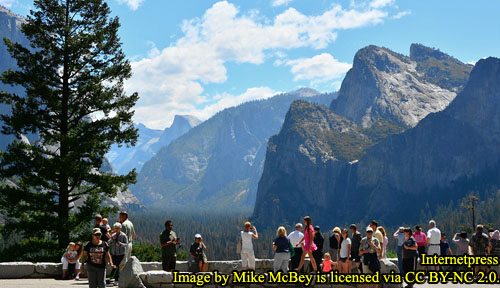
Olmsted Point View
Located along the scenic Tioga Road, Olmsted Point offers a unique, distant view of Half Dome from a completely different angle than the valley floor. About a two-minute walk from the nearby parking area, this overlook is easily accessible from the paved road and features a short, well-marked path that leads visitors to the viewpoint. From Olmsted Point, you can see Half Dome from the northwest, with its rounded top and rugged face framed by granite outcrops and twisted pines, offering a perspective that captures the vastness of Yosemite’s high country. Olmsted Point tends to draw a moderate number of visitors, especially during the summer and early fall when Tioga Road is open, as it’s a popular stop along this high-altitude route. The area also has a short interpretive trail, which provides more insights into the unique geology of the region. Restroom facilities are available near the parking area, making it a comfortable stop for extended viewing. Late afternoon often provides the best light for capturing Half Dome from Olmsted Point, with the softening sunlight adding warmth and depth to the granite landscape. This spot is a hidden gem for photographers looking to capture a lesser-seen angle of Half Dome.
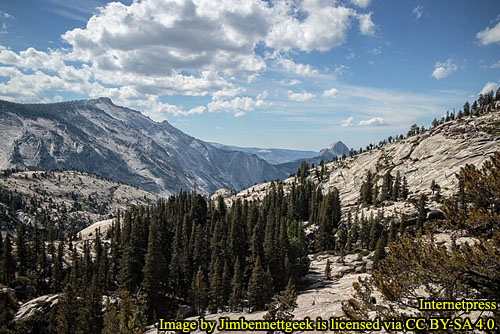
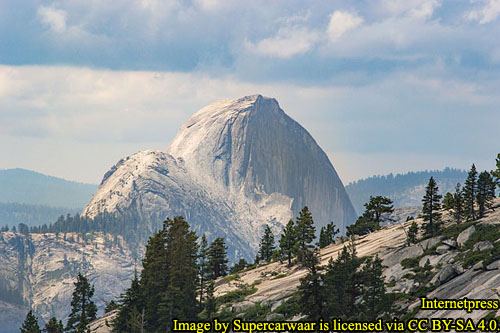
Washburn Point View
Located along the Glacier Point Road, just a short distance before reaching Glacier Point itself, Washburn Point offers an awe-inspiring view of Half Dome from a unique, southeastern perspective. This overlook is just steps from the parking area, making it incredibly accessible for all visitors. From Washburn Point, you can see Half Dome’s rugged face alongside panoramic views of the Yosemite high country and Vernal and Nevada Falls cascading below, creating a truly breathtaking scene. While Washburn Point draws many visitors, it tends to be slightly less crowded than Glacier Point, providing a quieter experience to soak in the views. The overlook is accessible from late spring to early fall, when Glacier Point Road is open. Although there’s no specific foot trail leading directly to Washburn Point, the parking area makes it easy to stop and enjoy the scene without much walking. Restroom facilities are located nearby at Glacier Point, a short drive down the road. Early morning and late afternoon are prime times to visit Washburn Point, as the changing light adds depth and warmth to the vast landscape, making it a fantastic spot for photographers and those looking to capture Yosemite’s grandeur.

Glacier Point View
Located high above Yosemite Valley’s floor, Glacier Point offers one of the most breathtaking, sweeping views of Half Dome, framed by the surrounding peaks. Accessible by a paved road, Glacier Point is about a hundred yards from its parking lot, making it an easy walk for visitors of all ages. From this vantage point, visitors can see Half Dome from the south, allowing for stunning, unobstructed views of its rugged profile and dramatic height. Glacier Point attracts many people, especially in summer and early autumn, when the road to this overlook is open. During these seasons, a well-maintained foot trail—the Four Mile Trail—also connects Yosemite Valley to Glacier Point, with its trailhead conveniently located near the Yosemite Valley Lodge. For restroom facilities, the Glacier Point area offers a nearby restroom close to the overlook, adding convenience to a longer visit. Sunrise and sunset are magical times to visit Glacier Point, with soft, warm light casting a golden glow across Half Dome, making it a prime spot for photographers hoping to capture the peak in all its glory.
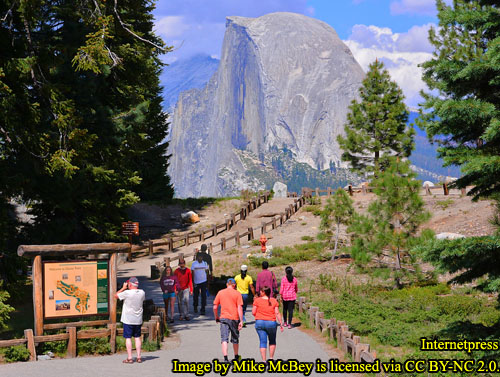
Sentinel Dome View
Located along the Glacier Point Road, Sentinel Dome offers a 360-degree panoramic view of Yosemite’s iconic landmarks, with a stunning perspective of Half Dome from the southwest. To reach Sentinel Dome, visitors must hike a moderate, one-mile trail from the nearest parking area along Glacier Point Road. This trail, which starts at the Sentinel Dome Trailhead, leads through a scenic forested area before opening up to the granite dome itself. The view from the top is well worth the effort, as you’ll see Half Dome, El Capitan, and even the distant Sierra peaks on a clear day. Sentinel Dome is moderately popular, drawing a steady number of hikers, especially in the summer and early fall when Glacier Point Road is open. The hike is manageable for most visitors and provides a rewarding sense of solitude compared to the more crowded overlooks. Restroom facilities are available at the nearby Glacier Point parking area. Sunset is an especially magical time to visit Sentinel Dome, as the changing light adds warmth to the granite and paints Half Dome in hues of gold and pink, creating an unforgettable scene for photographers and sightseers alike.

Cook’s Meadow View
Nestled in the heart of Yosemite Valley, Cook’s Meadow offers an idyllic spot for viewing and photographing Half Dome with a classic valley perspective. Located a short distance from Northside Drive, the meadow is easily accessible from nearby parking areas, with a well-maintained boardwalk leading visitors into the heart of this lush, open space. The expansive meadow allows for unobstructed views of Half Dome to the east, and on a clear day, the iconic granite face rises prominently above the trees and meadows, creating a stunning backdrop. Cook’s Meadow is generally a calm and peaceful spot, attracting a moderate number of visitors, especially in spring and summer when wildflowers bloom and the meadow is at its greenest. The Cook’s Meadow Loop Trail winds through the area, with trailheads accessible from multiple points near the Yosemite Visitor Center and the parking areas around it. Restrooms are located nearby, close to the visitor center, providing easy access for those spending extended time in the area. Late afternoon and early evening are particularly beautiful times to visit Cook’s Meadow, as the warm light enhances the meadow’s vibrant colors and casts a soft glow on Half Dome, making it a favorite spot for photographers and nature lovers alike.
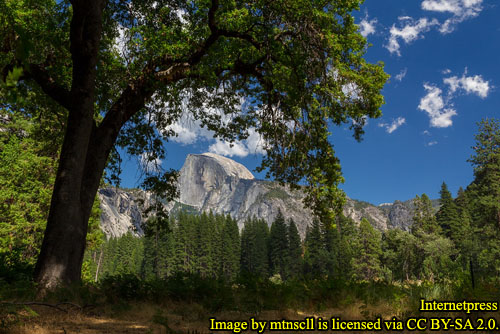
Sentinel Bridge View
Located in the heart of Yosemite Valley, Sentinel Bridge offers a unique and picturesque view of Half Dome with the Merced River in the foreground, creating a perfect mirror reflection when the water is still. Just a short walk from the paved road and nearby parking areas, Sentinel Bridge is highly accessible, making it popular with both photographers and visitors looking to capture a memorable shot. This spot tends to attract a fair number of people, particularly in the warmer months of spring, summer, and fall when access is easy and the reflections are most vivid. Sentinel Bridge is accessible year-round, though winter offers a quieter experience with fewer visitors. Facing north from the bridge, you can capture Half Dome beautifully framed by trees along the riverbank. For those exploring on foot, the Yosemite Valley Loop Trail passes nearby, with trailheads accessible from multiple points in the valley. Restrooms are located close to the parking areas, providing convenience for a longer visit. Sunset is an especially enchanting time to be at Sentinel Bridge, as the evening light bathes Half Dome in soft, warm hues, making it a favorite for photographers seeking that classic Yosemite shot.
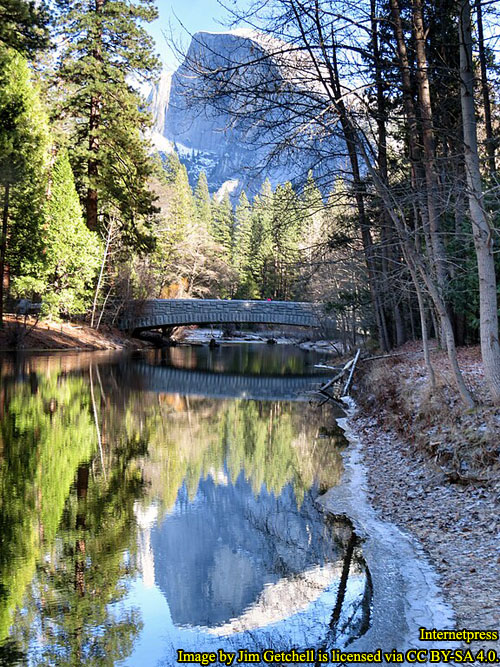
Ahwahnee Meadow View
Located near the historic Ahwahnee Hotel, Ahwahnee Meadow offers a tranquil and expansive view of Half Dome from a unique angle. Accessible from Northside Drive, the meadow is a short walk from the nearest parking area, making it easy for visitors to reach. This open field provides a spacious vantage point, with Half Dome visible to the southeast, standing prominently above the meadow’s golden grasses and framed by scattered trees. Ahwahnee Meadow is less crowded than some other viewpoints, attracting a moderate number of visitors, especially during the spring and fall seasons when the meadow’s colors are most vibrant. The Valley Loop Trail passes by Ahwahnee Meadow, with trailheads accessible from various locations throughout the valley, allowing for a scenic walk to this viewpoint. Restroom facilities are available at the nearby Ahwahnee Hotel, adding convenience for a longer stay in the area. Sunset is an especially beautiful time to visit Ahwahnee Meadow, as the warm evening light highlights the textures of Half Dome and casts a soft glow across the meadow, creating a peaceful, picturesque scene perfect for photographers and sightseers alike.
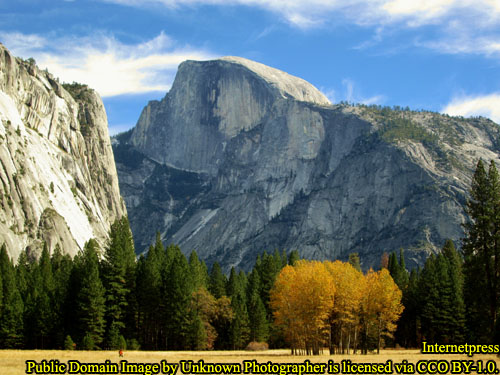
Mirror Lake View
Tucked into a quiet corner of Yosemite Valley, Mirror Lake provides a serene and unique view of Half Dome, reflected perfectly on the lake’s calm surface when water levels are high. Located at the end of Mirror Lake Trail, the lake is accessible by a paved pathway from the nearest parking area at the trailhead near Shuttle Stop #17, about a mile’s walk from the parking lot. This scenic location attracts a fair number of visitors, especially during spring and early summer when the lake is fullest, creating the iconic mirror effect. The Mirror Lake Trail, a relatively easy hike, begins near the trailhead at the end of Northside Drive and loops around the lake, offering multiple perspectives of Half Dome. The view here faces south, giving visitors a close-up perspective of the peak’s sheer, granite face rising dramatically from the valley floor. Restrooms are available near the trailhead parking area, providing convenience for those planning to explore further. Early morning is a prime time to visit Mirror Lake, as the stillness of the water enhances the reflection, and the softer light creates a peaceful, picturesque scene that’s perfect for photography.

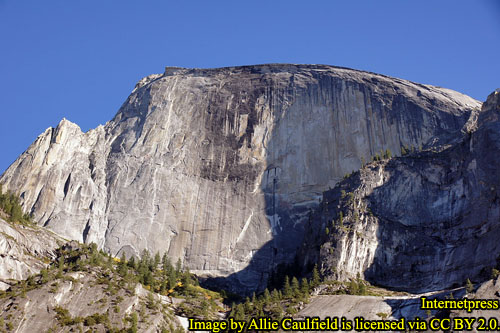
North Dome View
North Dome, perched at around 7,518 feet (2.3 Km) above sea level and about 3,518 feet (1.1 Km) above Yosemite Valley, is a rewarding destination for those looking to experience a unique, less-visited view of Half Dome. Situated along Tioga Road, North Dome can be accessed via the Porcupine Creek Trailhead, which is open seasonally when Tioga Road is cleared of snow, usually from late spring to early fall. This viewpoint requires more effort than Glacier Point, Sentinel Dome, or Washburn Point, as it’s the farthest from a parking area, requiring a 4.1 mile (6.5 Km) hike from the trailhead. For those planning to visit, there’s a toilet facility at the trailhead, and the trail itself is relatively flat for much of the way, though it features about a 700-foot elevation change in the last mile. This hike provides a remote, intimate perspective of Half Dome, located to the southeast, offering a quieter alternative to the popular, crowded viewpoints elsewhere in Yosemite. Though longer, the round-trip hike from the trailhead to North Dome can typically be completed in about 5-6 hours, rewarding hikers with panoramic views that make the extra effort worthwhile.
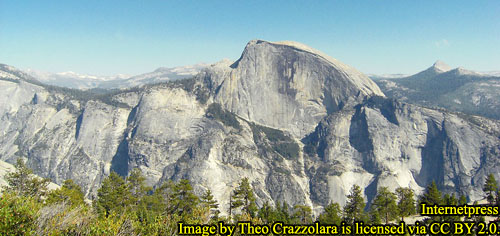
Lodging and Camping
This section will be published at a later date. To get notified, subscribe to the news letter.